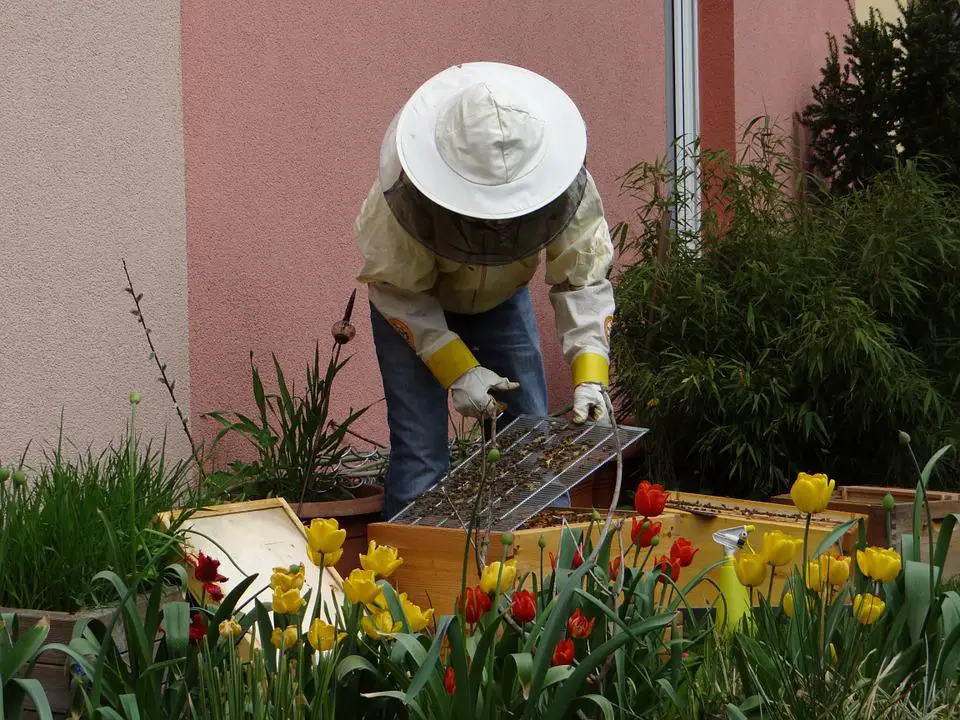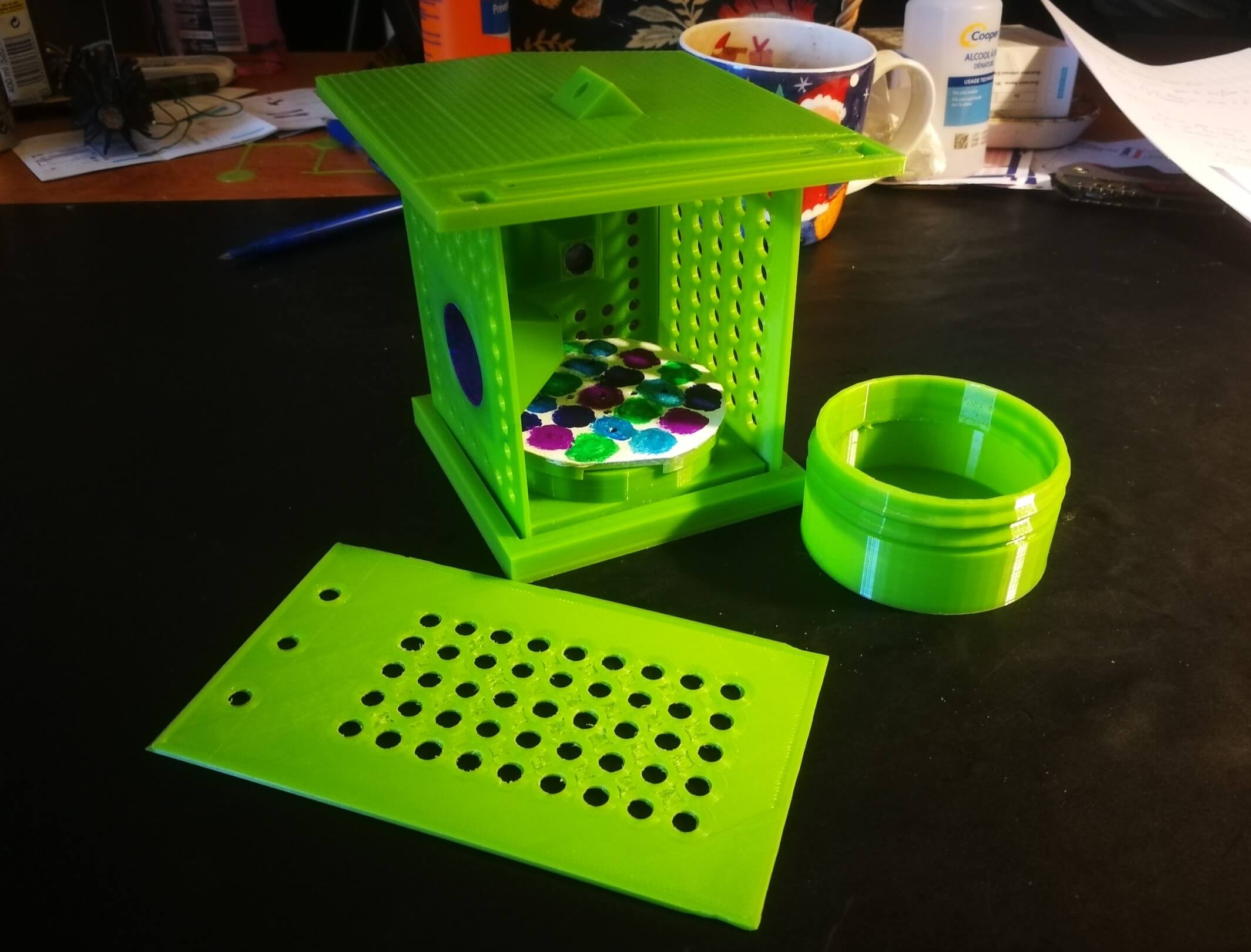How to become a beekeeper?
A step-by-step guide to get started

Let us give you some examples:
In the last 18 years, the number of beekeepers in Germany increased from around 110,000 to 150,000. That’s a plus of 36%4.
Similar to the trend of urban gardening there is also a trend to backyard beekeeping.
Another example comes from the UK: the British beekeeper’s association’s membership numbers registered a rise from about 8,500 people in 2008 to more than 24,000 in 2017. Many of those people live and keep bees in towns and cities5.
Do you wonder how to become a beekeeper? Great! You are part of a growing community!
Another interesting fact is that each beekeeper in Germany keeps an average of only 6.7 bee colonies. And less than one percent are engaged in commercial beekeeping.
Here is an overview of the relation between the number of colonies (size of the beekeepers) and the number of beekeepers.
0-25 colonies: 96% of beekeepers
26-50 colonies: 3 % of beekeepers
over 50 colonies: 1 % of beekeepers
This is quite similar to what we’ve found out about the number and sizes of farmers.
The Food and Agriculture Organization FAO confirms, the majority (more than 90%) of all farms in this world seem to be small-scale farms, holding about 53% of all agricultural land. For more information read our article Large-scale farms: Can we feed the world with permaculture?
Okay, so far so good. We now know two important facts that are interesting for you if you are thinking about starting with beekeeping:
- The number of beekeepers is increasing so there is something positive related to beekeeping. Otherwise, the number of people wouldn’t increase. Good to know for you! AND
- There is a community of beekeeping beginners which whom you can connect and improve and grow together.
- Most of the beekeepers only keep a few hives. The reasons may vary but it seems to be proven practice.
This leads us to the first thing that you should consider when you are thinking about starting with beekeeping.
1) Define the reason and motivation why you want to keep bees
What is your reason? What’s your motivation?
These are the first and most important questions right after you google “how to become a beekeeper”.
So let’s go through this process together.
Why do you want to start with beekeeping?
- Did you hear about the fact that bees are endangered and you would like help?
- Do you need bees as pollinators for your veggie garden because you want to make sure that you get a good harvest?
- Would you like to have delicious honey from your own bees?
- Do you also like to harvest other products like wax or pollen?
- Is it your goal to earn money with beekeeping?
- Do you have a bit of free time and look for a hobby that involves some physical work outside?
- Are you ready to take responsibility for a beehive with about 45,000 animals?
- No one in your family is allergic to bees?
- Last but not least, you are willing to spend time gaining knowledge about bees and beekeeping before you get started?
If you can at least answer 4 of the above questions with yes, you should definitely keep on reading!
The more questions you could answer with yes, the more likely it is that beekeeping is suitable for you.
In the following, we will answer these questions step by step. We also explain what you should consider in order to get started without threatening the living creatures for which you want to care.
This leads us to the second step:
2) Gain knowledge about bees and beekeeping
Knowledge is key!
- Read our articles about sustainable beekeeping and bee products. If you are asking yourself how to become a beekeeper, it’s good to know the basics.
- Speak to a beekeeper in your area and ask him all the questions you may have. Also, ask him how much time he/she has to spend on bees. The time efforts vary in each area depending on the climate and the necessary pest control activities (mainly varroa).
- Buy or lend some books or search the internet for information about beekeeping.
- Search for beekeepers’ clubs or other initiatives that offer beekeeping courses in your area and attend a course.
3) Define a place for your hives
Each country has different regulations. Make sure you find out the regulations and restrictions for your area before you get a hive.
This is an example of how they can look like:
In Australia, the hives can be kept within 3 meters of a boundary fence if:
- the height of the solid fence is more than 2 meters.
- On the adjoining property to the fence, a building of not less than 2 meters high is constructed on the fenceline immediately adjacent to the hives which have no window or other openings in the elevation on the fenceline
- The adjoining property to that fence is unimproved land
- An impenetrable vegetation barrier (such as a hedge) not less than 2 meters high is located on the property boundary adjacent to the hives. If the above conditions cannot be met, the minimum distance hives can be kept from a fence is 3 meters.
You see, there are clear restrictions in some countries and you should better get aware of them before you get started. 😊
Your local beekeepers’ club is a good place to get this information.
Where to put a beehive in your backyard?
- Don’t put the hive in complete shade – 50 percent sun and 50 percent shade during the day is ideal.
- Face them towards the sun. In the southern hemisphere, the entrance of the hive should face north, in the northern hemisphere south.
- Don’t only rely on the food sources that your neighbors and nearby farmers may provide. Plant some bee-friendly flowers in your garden. Here you can find a list of suitable plants.
- Remember that bees fly up to 5 km. As intensive farming is a huge problem in many countries, make sure that a) your bees find enough food all year round and b) try to find out if nearby farmers use chemicals that are harmful to bees.
- If you live in a rental place, speak to your landlord.
- Also, speak to your neighbors and find out if they are allergic to bees and inform them that you are planning to keep bees. Experience shows that a little honey as a small souvenir of friendship is an excellent way of convincing skeptical neighbors. 🙂
4) Decide which way of beekeeping you want to practice. Conventional or organic
In conventional beekeeping, the focus is on honey yield.
In natural beekeeping, the approach is more oriented towards the needs of the bees, honey yield is secondary. This is the approach that we at Bees4life support. However, completely natural and organic beekeeping might be difficult for you to achieve. As we already mentioned, bees have a flight radius of 5 km and in most cases, you can’t influence the farming method of the farmers around you. You could definitely speak to them and ask if and if yes, what they spray. Some farmers inform the local beekeepers before they spray their orchards so that beekeepers can move their hives to a different place during that period. What you definitely can influence is to treat your bees very well. That’s what’s called sustainable beekeeping. For more information please read our articles about sustainable beekeeping.
5) Choose the type of hive for your bees.
You can choose from hundreds of different types of hives. Most people who are wondering how to become a beekeeper are also clueless when it comes to hives.
In this article, we list the most common hive types with their pros and cons.
We introduce:
- Longstroth / Dadant hives
- Top bar hive
- Warré hive
- Golden Hive or One-Room Hive (Einraumbeute)
- Flow Hive
The type of hive mainly depends on:
- the way of beekeeping you want to practice,
- the number of hives you are planning to keep and
- whether you want to make a living off beekeeping or not.
6) Get your tools and beekeeping equipment
The beekeeper’s basic equipment consists of a stick chisel, veil, gloves, broom, and smoker.
If you live in an area where you have to treat your bees against the varroa mite you will also need to get formic acid & oxalic acid. Accessories and materials can be found in your local beekeeping supply store and at various online retailers6.
7) Last but most important, get your bees
The question about the type of beekeeping, the type of housing, and the bee race you choose are closely related to each other.
- Basically, we support local procurement of honey bees, which at best come to your home like a swarm. In this case, you can be sure that your bees are vital, locally adapted, and have no diseases.
- Speak to experienced beekeepers in your area in order to find a bee race that is well adapted to your area and climate.
- Get your bees from a trusted source like a beekeeper’s club.
- For more information about the many different races read our article about bee races.
Here is our final tip and big request…
Enjoy your exciting journey, but please make a serious commitment and gain substantial knowledge before you get your first hive.
There is a trend around the world, that people who don’t know much about beekeeping buy a hive on the internet, put it in their backyards, and feel like they have done something good for the environment and the bees. NOT AT ALL!
We don’t have exact numbers but many hives die already within the first year or even spread diseases to other hives.
We all want to help stop the extinction of bees but putting a hive into your backyard without any knowledge and without taking care of it is contra-productive.
We hope that this guide helped you to understand how to become a beekeeper and more importantly, how to make a good decision for you and the bees.
Be(e) curious but mindful and enjoy caring for these beautiful creatures!



